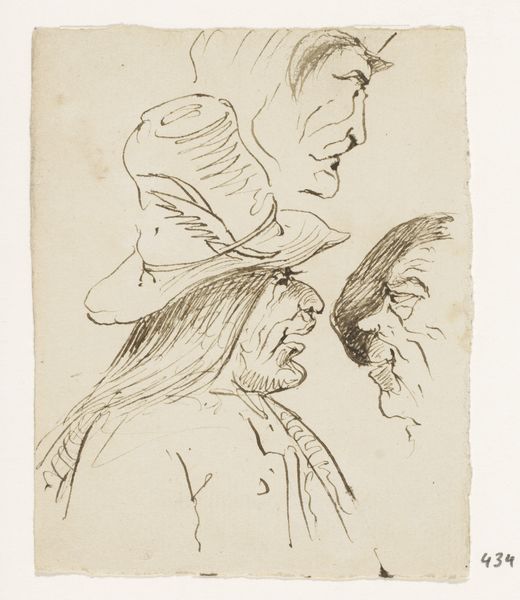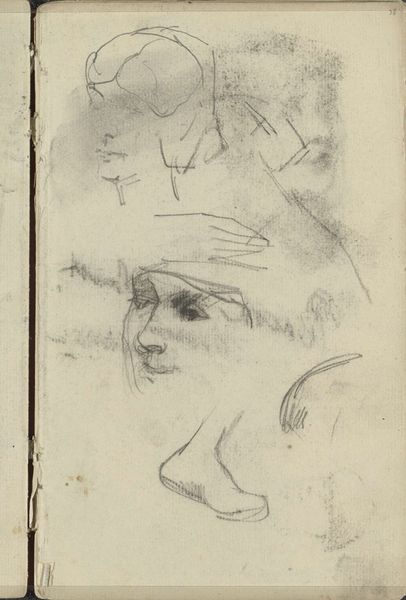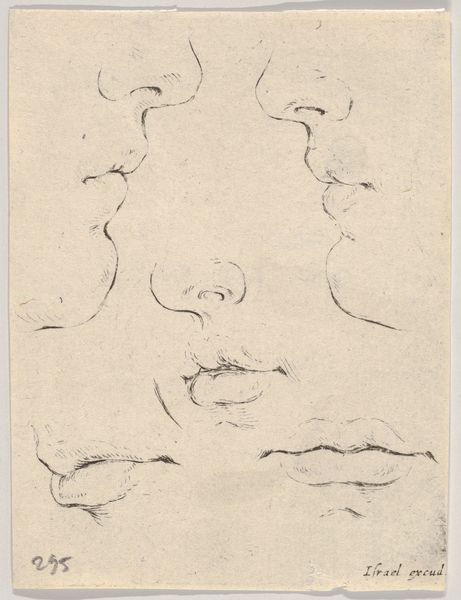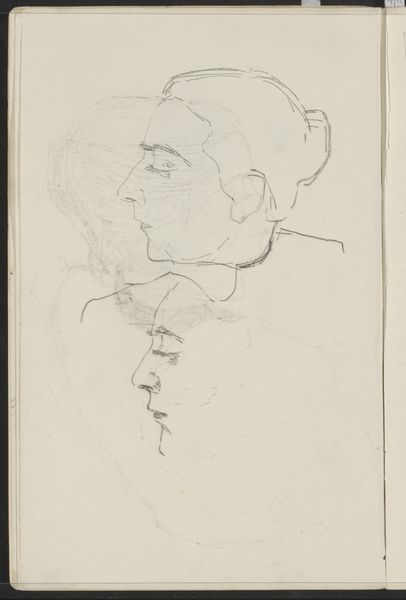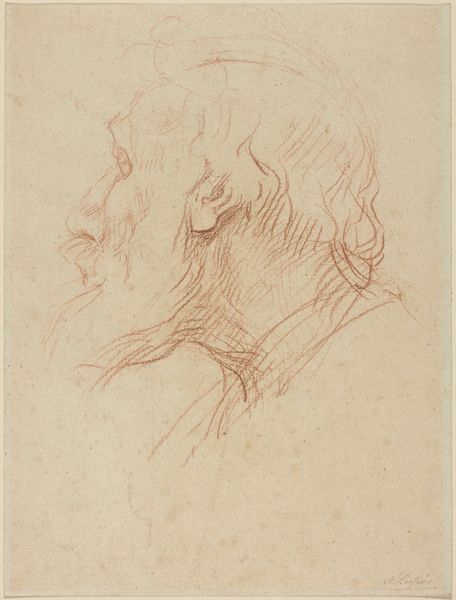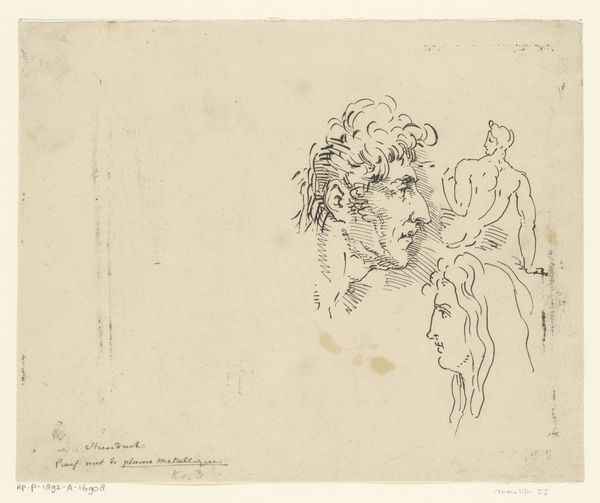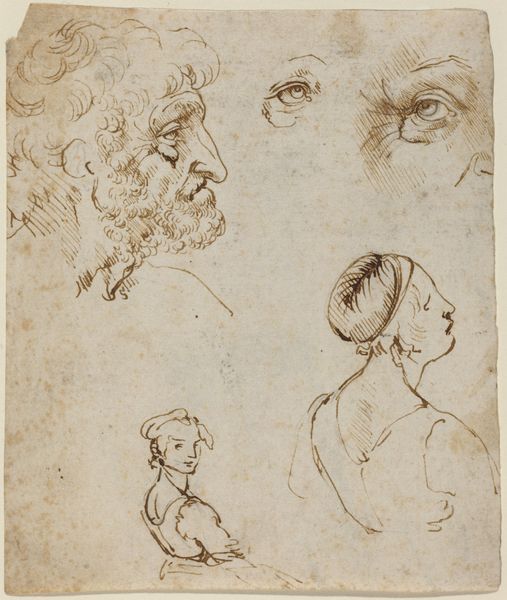
Copyright: Public Domain
Curator: Immediately, I’m struck by the expressiveness conveyed through such minimal lines. There’s an almost raw, vulnerable quality. Editor: This sheet of head studies by Henri de Toulouse-Lautrec, likely from the period between 1890 and 1895, offers an intriguing glimpse into the artist’s working process. The use of ink and dry media on paper speaks to a certain intimacy, a direct connection between artist and subject. Consider its placement within the context of the social environment. Curator: Intimacy is right! They appear almost brutally honest in their portrayal of the subjects, especially the large face at the top left. Do you think there's an element of social commentary here? It almost feels like a commentary on the theatricality of the Parisian scene during his time. Editor: Undeniably. Lautrec, deeply immersed in Montmartre’s cabaret culture, was keen to reveal societal structures. While the swift strokes feel impulsive, they hint at a meticulous understanding of social dynamics. Think of his posters and lithographs capturing performers, dancers, and the overall societal performances. Curator: Yes, the seemingly casual nature really pulls you in. You know, the gaze feels complicated in our era of reality tv and Instagram; these are unembellished human portrayals. What kind of public function would something like this sketch serve in his era? Editor: Lautrec’s work, whether drawings like this, paintings, or posters, consistently challenges established conventions within academic portraiture by embracing both modernity and immediacy. As we grapple with questions of representation in contemporary art, pieces such as these beckon discourse on history and societal reflections. His sketches often captured a diverse audience. Curator: So true. This work invites discourse not only within the art community but within broader social studies. It’s impossible not to feel affected when standing before something that simultaneously challenges norms and expresses empathy toward such a spectrum of people. Editor: It encourages further engagement with the rich and multifaceted layers of Lautrec's legacy.
Comments
No comments
Be the first to comment and join the conversation on the ultimate creative platform.

